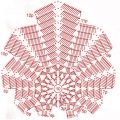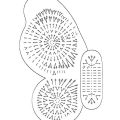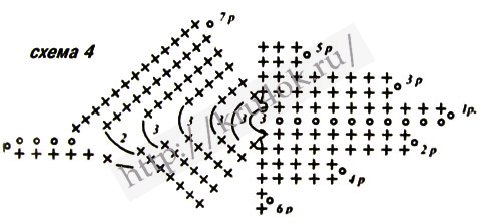
Crocheted leaves. Part 1
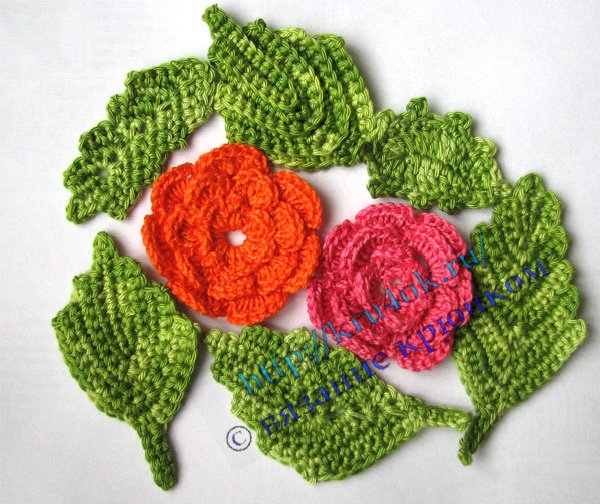 Crochet was always in demand, but into varying degrees. Today this kind of needlework is more popular than ever. The classical types of knitting are integrated: the pattern of loin knit becomes the rim of the summer; elements of guipure tablecloths - lush blouse decor. Patterns of napkins knit the field of hats, motifs of collars - coquette jackets. There are many examples. This is a natural process, a kind of creative game. In value in the preservation of traditions and their modern incarnation. Have you noticed, dear masters, that the emphasis in knitting is on complex options that are not subject to reproduction on a knitting machine? One of these directions is the guipure. It is designed as an imitation of complex and expensive Venetian embroidery. The best examples of such knitted lace were obtained from Irish nuns, so in time it was called "monastic", and later - Irish guipure. I ask not to be confused with the Irish lace, which in the manner of execution differs from guipure. Classic knitting gypsy knitting is complex and painstaking. Since he imitated needle-embroidered lace, he used lace flax, thin cream or white paper yarns for knitting elements and very thin for nets and brides. Modern fashion takes into account our employment, the rapid pace of life, the desire to quickly embody the intended product. She favorably refers to the models of large mating of thick yarn. This is in the hands of novice masters. You may have noticed that the mesh that fastens the elements is rarely used. The paintings of the "coupling" guipure are actual. Elements are larger, the thread is thicker. So, suppose you are planning to tie the blouse completely or its fragment with guipure elements. It is advisable to first draw a sketch on a pattern, you can improvise during the course of knitting. Most of the composition is occupied by leaves. In various books and magazines, many patterns of knitting of leaves are given. Within the framework of this article, it is impossible to discuss their diversity. For example, it is customary to knit a classic guipure sheet in two ways: with an extension from one RLS (Scheme 1) and with an extension on the arch (Scheme 2). In this case, the methods of knitting can be different: for both half loops, for the back half loop, for the front half loop, for the back horizontal loop of the columns of the previous row. The texture of the sheet on the first photo was flat, on the second - ribbed. Photo1. The sheet is crocheted according to scheme 1 for both half-loops:
Crochet was always in demand, but into varying degrees. Today this kind of needlework is more popular than ever. The classical types of knitting are integrated: the pattern of loin knit becomes the rim of the summer; elements of guipure tablecloths - lush blouse decor. Patterns of napkins knit the field of hats, motifs of collars - coquette jackets. There are many examples. This is a natural process, a kind of creative game. In value in the preservation of traditions and their modern incarnation. Have you noticed, dear masters, that the emphasis in knitting is on complex options that are not subject to reproduction on a knitting machine? One of these directions is the guipure. It is designed as an imitation of complex and expensive Venetian embroidery. The best examples of such knitted lace were obtained from Irish nuns, so in time it was called "monastic", and later - Irish guipure. I ask not to be confused with the Irish lace, which in the manner of execution differs from guipure. Classic knitting gypsy knitting is complex and painstaking. Since he imitated needle-embroidered lace, he used lace flax, thin cream or white paper yarns for knitting elements and very thin for nets and brides. Modern fashion takes into account our employment, the rapid pace of life, the desire to quickly embody the intended product. She favorably refers to the models of large mating of thick yarn. This is in the hands of novice masters. You may have noticed that the mesh that fastens the elements is rarely used. The paintings of the "coupling" guipure are actual. Elements are larger, the thread is thicker. So, suppose you are planning to tie the blouse completely or its fragment with guipure elements. It is advisable to first draw a sketch on a pattern, you can improvise during the course of knitting. Most of the composition is occupied by leaves. In various books and magazines, many patterns of knitting of leaves are given. Within the framework of this article, it is impossible to discuss their diversity. For example, it is customary to knit a classic guipure sheet in two ways: with an extension from one RLS (Scheme 1) and with an extension on the arch (Scheme 2). In this case, the methods of knitting can be different: for both half loops, for the back half loop, for the front half loop, for the back horizontal loop of the columns of the previous row. The texture of the sheet on the first photo was flat, on the second - ribbed. Photo1. The sheet is crocheted according to scheme 1 for both half-loops:  Photo 2. The sheet is crocheted according to scheme 1 for the back half loop:
Photo 2. The sheet is crocheted according to scheme 1 for the back half loop:  Photo 3. Complex sheet.
Photo 3. Complex sheet.  Crochet crochet pattern 1 and 2:
Crochet crochet pattern 1 and 2: 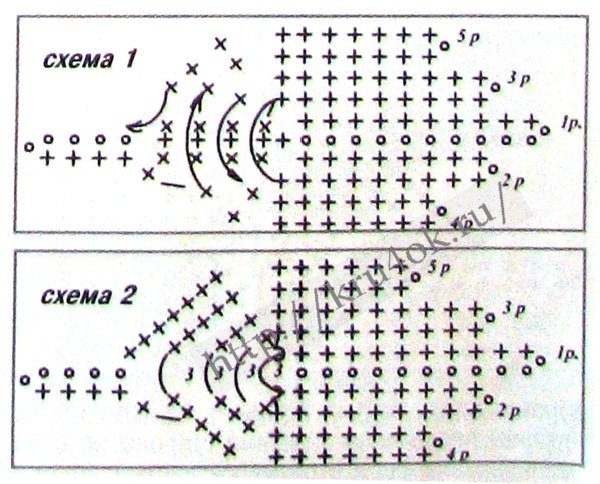 Photo 4. Sheet 1 is crocheted according to scheme 2.
Photo 4. Sheet 1 is crocheted according to scheme 2.  Pattern 3. Crochet crochet.
Pattern 3. Crochet crochet. 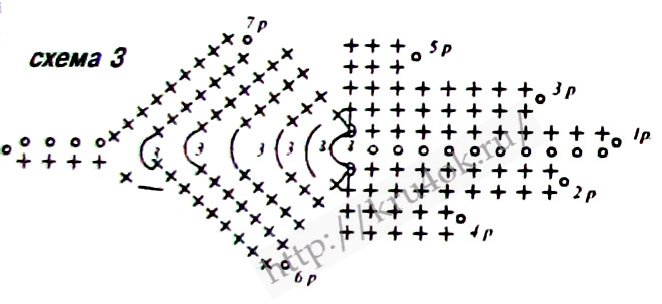 Pattern 4. Crochet sheet crochet.
Pattern 4. Crochet sheet crochet.  The shape of the sheet, connected according to scheme 1, is widecuttings and sharp at the tip. Additions on the arch of Scheme 2 create a sharper form of the cuttings in the cuttings. With a large number of typed air loops (10-12) and a generally accepted indentation of 2 columns without a crochet, the sheet turns out to be wide. The teeth of the leaf concentrate on the anterior part, the cuticle has a smooth leaf. This shape is good when you combine them in a complex sheet (photo 3). With a small number of air loops of the original chain (4-6), the sheet turns out to be narrow and for multi-row knitting - a long one. The teeth are located along the entire length of the sheet (sheet 2 in photo 4). And if the composition needs a large sheet with denticles along the entire length? Increase the number of columns without an indentation (Diagram 3). For compositions of clear, ornamental, one or two kinds of leaves are used. In the sketch draw leaves of different sizes and shapes: small and large, even and curved. Turning the sheet is obtained when knitting different amounts of RLS on the left and right sides of the arch: 1 and 2, 2 and 3 give a slight turn of the sheet, and 1 and 3 - more steep. Sheet 4 in photo 4 is associated with a turn in one direction (Scheme 4). Such a variety of shapes and sizes of leaves only decorate the composition. To be continued ... The article is based on the publications from the Maud magazine.
The shape of the sheet, connected according to scheme 1, is widecuttings and sharp at the tip. Additions on the arch of Scheme 2 create a sharper form of the cuttings in the cuttings. With a large number of typed air loops (10-12) and a generally accepted indentation of 2 columns without a crochet, the sheet turns out to be wide. The teeth of the leaf concentrate on the anterior part, the cuticle has a smooth leaf. This shape is good when you combine them in a complex sheet (photo 3). With a small number of air loops of the original chain (4-6), the sheet turns out to be narrow and for multi-row knitting - a long one. The teeth are located along the entire length of the sheet (sheet 2 in photo 4). And if the composition needs a large sheet with denticles along the entire length? Increase the number of columns without an indentation (Diagram 3). For compositions of clear, ornamental, one or two kinds of leaves are used. In the sketch draw leaves of different sizes and shapes: small and large, even and curved. Turning the sheet is obtained when knitting different amounts of RLS on the left and right sides of the arch: 1 and 2, 2 and 3 give a slight turn of the sheet, and 1 and 3 - more steep. Sheet 4 in photo 4 is associated with a turn in one direction (Scheme 4). Such a variety of shapes and sizes of leaves only decorate the composition. To be continued ... The article is based on the publications from the Maud magazine.
